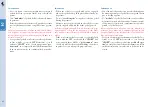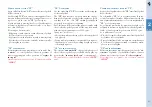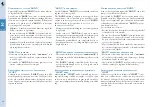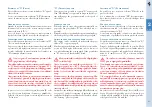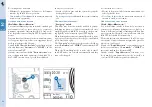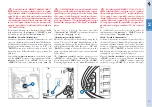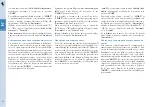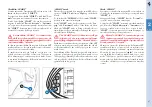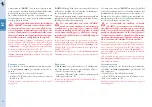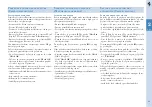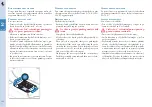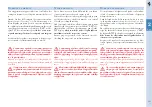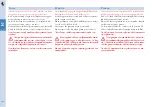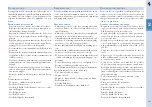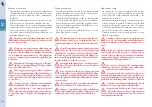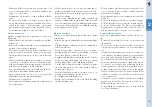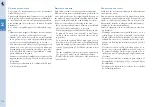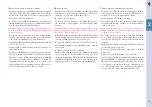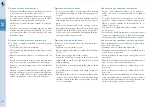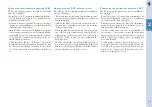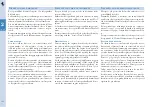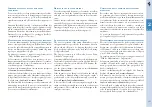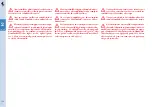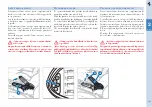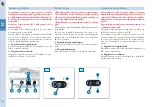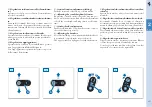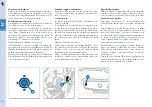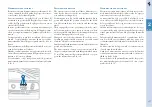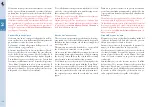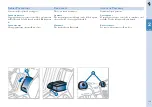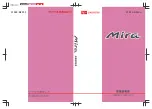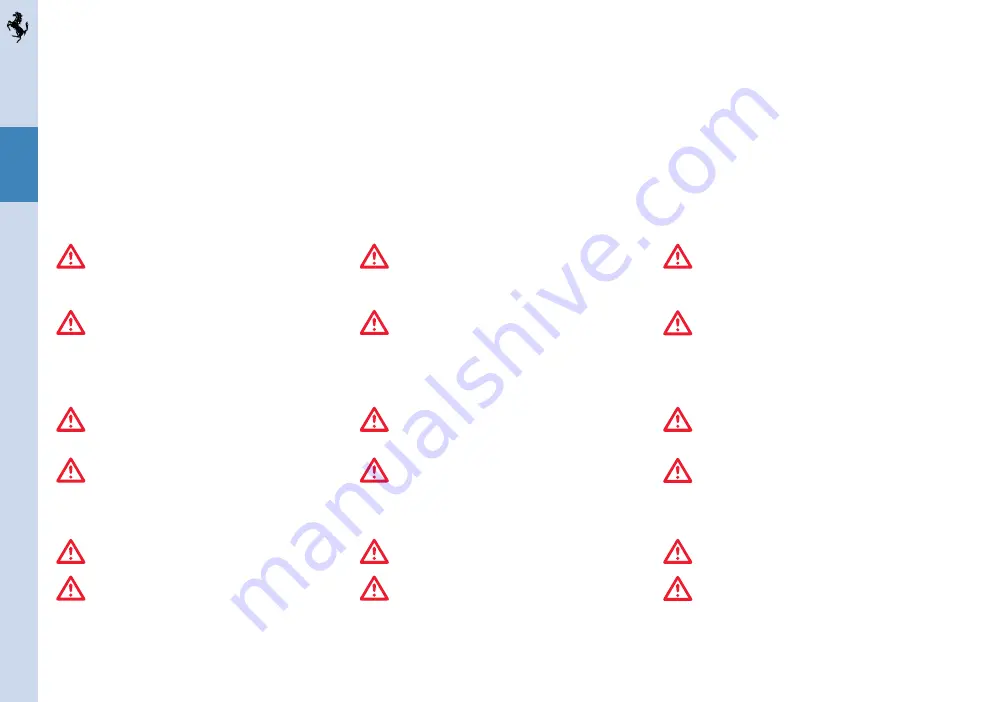
104
2
2.72
Durante il viaggio
- La prudenza è la prima regola per una guida sicura
che significa anche mettersi in condizione di poter
prevedere un comportamento errato o imprudente
degli altri.
- Seguire attentamente le norme di circolazione stra-
dale di ogni paese rispettando i limiti di velocità .
- Assicurarsi sempre che, voi e tutti i passeggeri della
vettura abbiano le cinture allacciate, che i bambini
siano trasportati con gli appropriati seggiolini.
- Un buono stato di forma permette di affrontare con
sicurezza i lunghi viaggi.
Guidare sotto l’effetto di stupefacenti o di
particolari medicinali è pericolosissimo
per sé e per gli altri.
Viaggiare senza le cinture allacciate au-
menta il rischio di lesioni gravi o di mor-
te in caso d’urto. Allacciare sempre la cintura,
sia occupando i posti anteriori, che quelli po-
steriori, compresi gli eventuali seggiolini per
bambini.
Disattivare l’airbag passeggero (dove pos-
sibile) se si monta un seggiolino per bam-
bini sul sedile anteriore.
Non viaggiare con oggetti liberi sul pavi-
mento sopratutto davanti al sedile del gui-
datore: in caso di frenata potrebbero inserirsi
sotto i pedali, rendendo impossibile accelera-
re o frenare.
A tal proposito, valutare attentamente
l’ingombro di eventuali sovratappeti.
Acqua, ghiaccio e sale antigelo sparso
sulle strade depositandosi sui dischi fre-
no, possono ridurre l’efficacia della prima fre-
nata.
When travelling
- Caution is the number one rule for safe driving, which
means ensuring you can anticipate other people’s
incorrect or imprudent behaviour.
- Follow the Road Regulations of the country in which
you are driving, and always respect the speed limit.
- Always make sure that you and the passengers have
your seat belts fastened and that all children are trav-
elling in suitable child seats.
- Good personal physical conditions ensure you can
drive long distances safely.
Drunk driving, or driving under the in-
fluence of drugs or certain medicines is
extremely dangerous for the driver and for oth-
ers.
Travelling without your seat belt fastened
increases the risk of serious injury and
death in the event of a collision. Always make
sure the seat belts are fastened. This applies to
those travelling in the front or the rear, includ-
ing the children in their car seats.
Deactivate the passenger’s airbag (where
possible) if a children’s car seat is fitted
on the front seat.
Do not travel with objects lying around
on the floor, especially in front of the driv-
er’s seat: in the event of braking, these could slide
under the pedals, making it impossible to brake
or accelerate.
Also regarding this, remember to take into
account the size of any mat covers.
Water, ice and salt spread to combat icy
roads may deposit on the brake discs and
reduce the efficiency of the initial braking.
Durante el viaje
- La prudencia es la primera regla para una conduc-
ción segura, lo que significa también ser capaces de
poder prever un comportamiento equivocado o im-
prudente de los demás.
- Siga atentamente las normas de circulación en carre-
tera de cada país respetando los límites de velocidad.
- Asegúrese siempre de que usted y todos los pasaje-
ros del automóvil llevan los cinturones abrochados y
que los niños viajan en las sillitas adecuadas.
- Un buen estado de forma permite afrontar con segu-
ridad los viajes largos.
Conducir bajo el efecto de estupefacien-
tes o de determinados medicamentos es
peligrosísimo para uno mismo y para los de-
más.
Viajar sin el cinturón abrochado aumen-
ta el riesgo de lesiones graves o de muerte en
caso de colisión. Abróchese siempre el cinturón,
tanto en las plazas delanteras como traseras,
incluidas las sillitas para niños.
Desconecte el airbag del acompañante
(donde sea posible) si monta una sillita para
niño en el asiento delantero.
No viaje con objetos sueltos en el piso so-
bre todo delante del asiento del conductor: en
caso de frenada podrían situarse debajo de los
pedales haciendo imposible acelerar o frenar.
Con tal fin, mida cuidadosamente las di-
mensiones de posibles alfombrillas.
Agua, hielo y la sal contra el hielo espar-
cida en la carretera que se depositan en
los discos de freno pueden reducir la eficacia
de la primera frenada.
Summary of Contents for 612 scaglietti
Page 1: ......
Page 2: ...1 USO E MANUTENZIONE OWNER S MANUAL USO Y MANTENIMIENTO ...
Page 23: ...2 2 1 6 7 8 9 10 5 4 3 2 12 11 1 13 1 16 Targhette Data plates Etiquetas ...
Page 33: ...3 2 1 1 26 ...
Page 161: ...160 3 3 2 Gruppo motore Engine assembly Grupo motor ...
Page 197: ...196 4 4 4 Cambio e differenziale Gearbox and differential Cambio y diferencial ...
Page 207: ...206 4 6 3 13 2 5 4 7 4 7 8 8 1 12 6 9 4 9 4 11 10 4 14 ...
Page 292: ......

